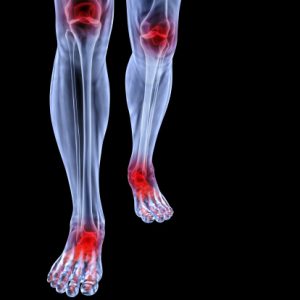
What is interesting about inflammation is that we need it to stimulate the healing process when something goes wrong within the body; however, too much inflammation can end up creating a lot of discomfort as well as a variety of health complications.
Causes of Joint of Inflammation
There can be any number of causes for inflammation, all of which will cause pain and discomfort. Any damage to the joints from injury or disease can interfere with movement and cause pain. It is essential to know the cause of your inflammation to treat the symptoms appropriately.
Joint pain and inflammation can range from mild to debilitating and may go away after a few weeks, or last for several weeks or even months. No matter how long the inflammation lasts, it can affect the quality of life, which is why it is so important to learn the cause of the inflammation and ways to reduce it.
Synovitis is one possible reason for inflammation of the joints, which is the term used when the thin membrane lining the joints become inflamed, releasing chemicals that irritate nerves, therefore increasing fluid in the joint. When this fluid builds in the joint from synovitis, a swollen joint capsule is formed causing pressure, stiffness, and pain.
Bone erosion could also be another cause of inflammation of the joints. This occurs when damaged, pitted bones in the joints cause pain. Ligaments that are bands of flexible tissue that support the joint could also become damaged and cause pain and swelling.
For back pain and inflammation, joint fusion could be to blame. This is when small bones that form the vertebrae could fuse together, making it hard and painful to move. This, along with many other conditions, can cause muscle weakness that puts more stress on the joints causing pain and inflammation.
Inflammation and Healing
When we cut ourselves, it may get red, swollen, and perhaps puffy. The area becomes inflamed due to an essential chemical reaction that takes place to break down damaged tissue, fight off germs, and heal the wound. You could call inflammation our body’s self-healing system.
Too Much of a Good Thing
Unfortunately, in some people, inflammation is in the body more than it should be. Chronic inflammation has been associated with diseases such as arthritis and tendonitis. Studies have also linked inflammation to heart disease, brain ailments, diabetes, cancers, allergies, various auto-immune diseases, and sinus problems.
Arthritis and Inflammation/Muscle Soreness
Close to 50 thousand Americans have some form of arthritis. The chances of getting it increase with age; however, many young people also suffer the muscle soreness, pain, and stiffness associated with this crippling ailment. The most common form of arthritis is osteoarthritis. It occurs when cartilage on the bones wear down. Arthritis can impact your joint health due to age, weight, injury, illness, and infection. There are over 100 different types of arthritis.
Inflammation – Diet and Lifestyle
Evidence continues to connect diet and lifestyle to inflammation and problems associated with it. Boston’s Brigham and Women’s hospital has conducted studies that show inflammation is a “central” factor in cardiovascular disease. Experts at the Cleveland Clinic say inflammation and heart disease are no longer a theory, but a reality.
Of course, a poor diet is one of the biggest reasons people end up fighting heart disease. Fatty build-ups in the muscles become inflamed. Inflammation can be measured with a test called the C-reactive protein check.
When trying to reduce inflammation, try to void refined carbohydrates such as white bread and pasta. These foods are known to be inflammatory and could make the condition worse. Other foods to avoid include soda, fried foods, red meat, and margarine or lard. These are all known to create inflammation and even make it worse in those suffering from joint inflammation. Several U.S based studies, including research at Oregon State University, also show that high glucose levels lead to inflammation as well.
Just as some foods can lead to inflammation; other foods have been shown to help reduce inflammation. These foods include green leafy vegetables, tomatoes, olive oil, nuts, and fatty fish. Many types of fruit have also been known to help with inflammation, including strawberries, blueberries, cherries, and oranges. Research indicates that diet and exercise can significantly lower C-reactive protein or CRP.
Infections and Inflammation
Disease-causing organisms can invade various body parts internal and external. Infections tend to include inflammation. Examples include everything from strep throat and influenza to gingivitis and foot fungus. The Centres for Disease Control notes that there is a long medical history of linking infections with inflammation and inflammation with chronic disease.
Researchers at the University of San Francisco and the University of California say people who experience a lot of stress have higher inflammatory markers in their bloodstream. Other studies have looked at the relationship between stress and inflammation, but this is the first time a study has taken a close look at the impact of cumulative stress and inflammation.
The two universities examined close to one thousand with stable heart disease and analyzed their exposure to at least 18 different stressful events. They measured clinical markers of inflammation that circulate in the bloodstream and found a direct link between lifetime stress and inflammation.
If you are experiencing joint pain, consult with a doctor for a diagnosis. Your healthcare professional will be able to work with you to treat the condition that is causing the joint pain. The main goal is to reduce both the inflammation and joint pain to preserve the joint function.
As damage to the joints from injury or disease can interfere with movement and cause pain, it can ultimately affect the quality of life. This is why it is so important to treat the root of problem and not just the symptoms.